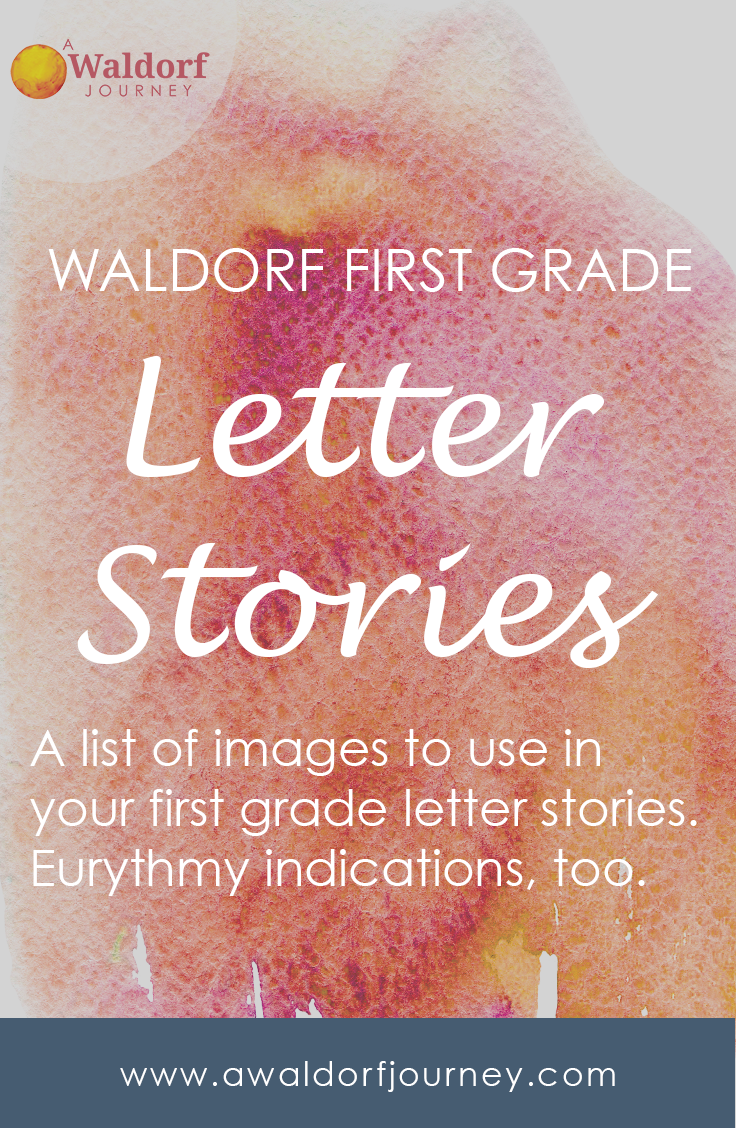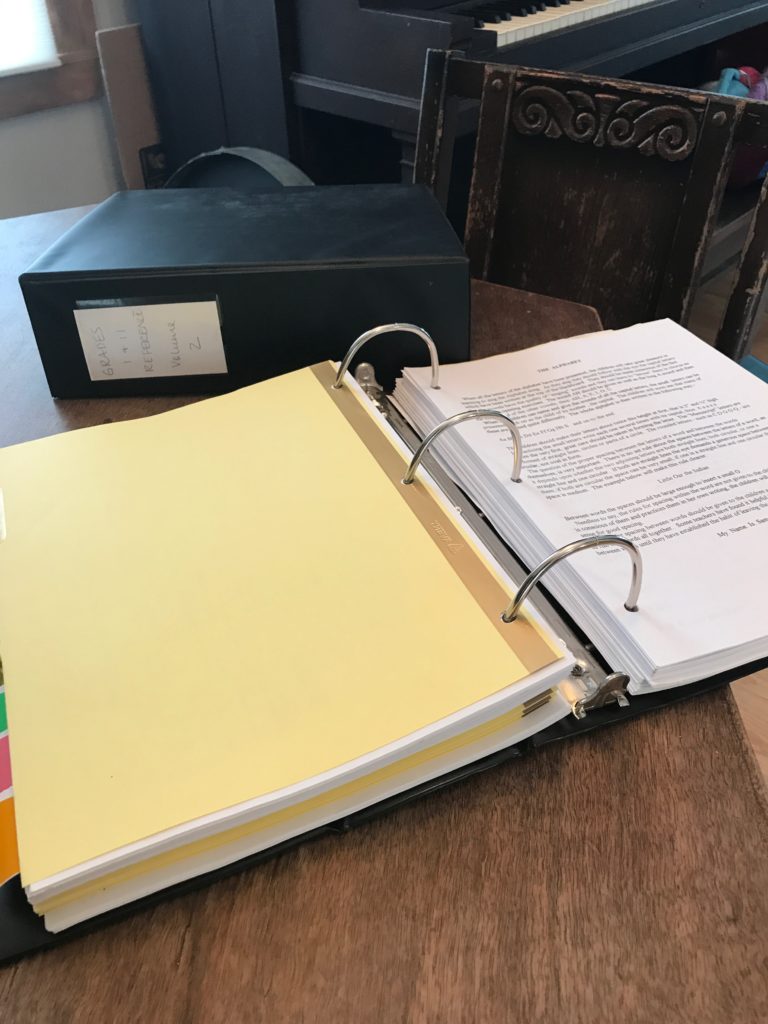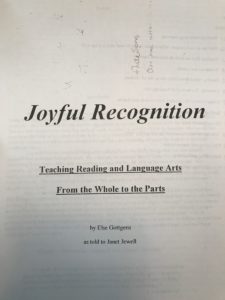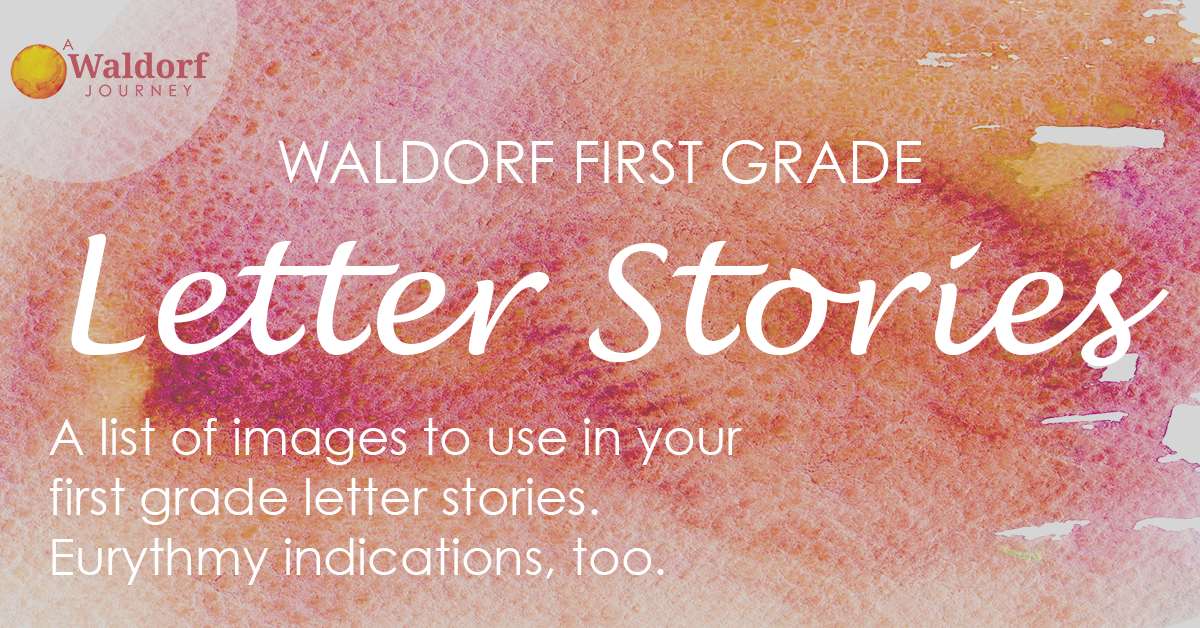 Now that 8th grade graduation is behind me, I’m starting to get all geared up for 1st grade. I’ve got just 3 weeks before my family and I head off for our big summer trip, so I’m wasting no time getting going on my summer prep.
Now that 8th grade graduation is behind me, I’m starting to get all geared up for 1st grade. I’ve got just 3 weeks before my family and I head off for our big summer trip, so I’m wasting no time getting going on my summer prep.

Years ago a former colleague of mine put together these two amazing binders full of information for first and second grade. I copied them and have held onto them all these years. I’ve spent the past couple of days flipping through and have realized they are an absolute gold mine!
Most of the contents are old, tried-and-true resources that are in the public domain, so as I work my way through I’ll share with you.
Else Gottgens
 First, I found this treasure from Else Gottgens — the wisest Waldorf mentor I ever had the good fortune to meet. I searched around to see if this book is available for purchase and found that it is not. But there is an Else Gottgens tribute site with some good pdf downloads.
First, I found this treasure from Else Gottgens — the wisest Waldorf mentor I ever had the good fortune to meet. I searched around to see if this book is available for purchase and found that it is not. But there is an Else Gottgens tribute site with some good pdf downloads.
You can also purchase her book Waldorf in Practice on that site or on Amazon. It focuses on the lower grades, and I’ve never read it, so I picked up a copy for our school library.
Waldorf First Grade Letter Stories
The other thing I found in those treasure trove binders is a basic list of 1st grade letter story recommendations. I’m sure with a little more digging I’ll find the stories themselves, but I thought this list is a really great place to start.
- M mountain
- B baby, bears
- P proud prince
- D duck
- T tree
- N nixie
- F fish, forget-me-not flower
- L latch on the door, ladder, lightning
- H house, horse
- S salamander, snake
- R robbers (with jackets full of loot)
- C cat
- J Jack Frost
- K King Winter
- Q Queen Icicle
- V valley
- W wave
- X x marks the spot
- Y in the path
- Z zig-zag path
- G golden goose
Consonant Eurythmy Indications
On the back of that story list I found some notes from a eurythmy course study taken from Steiner’s Eurythmy as Visible Speech. Some of these insights resonate with me, but I would have to meditate on many of them to really grasp the meaning. The eurythmy gesture for the sounds below also make these meanings a little more understandable.
Consonants: an expression or imitation of outer forms or outer happenings
The consonants below are a recommended evolutionary sequence for teaching children.
- M Entering right into something outside itself; transforming or giving form to matter; to understand or be in agreement.
- B To wrap around, to envelop; imitation of a house, a protecting, sheltering form would be produced; evenloping nature
- P As B gives a home for the body, P gives a form for the spirit.
- D To indicate; to ray outwards; to touch; to stand.
- T A significant streaming from above downwards.
- L The transforming of matter into form. The most transformative sound.
- N Understanding after comprehending the matter.
- F “Thou knowest that I know.” The breath which contains the knowledge of the world.
- H Blowing, wafting past, breath sound.
- G Pushing sound makes space.
- S The feeling of being able to penetrate into the hidden nature of something and in so doing to bring about a state of calmness and rest. S in the staff of Mercury.
- R An impression of rolling, revolving, turning around.
Sounds of force: D, T, B, P, G, K, M, N earth element
Wave sound: R water element
Vibrating sound: L air element
Breath sounds: C, F, H, S, SCH, CH, J, V fire element






Thank you!
I’d love to hear the stories you use as well!
I’ll definitely be posting!
Thank you for these, especially the Eurythmy Indications and the link to the Else Gottgens tribute site. I loved using Rapunzel for R and drawing her leaning from her tower with a braid shaping the R. There are also many swan stories you could use for S. D might be a magical door. Such a fun and living way to learn!